4 Evolutions of Women in Quentin Tarantino Movies Roused by the Want for Revenge
Quentin Tarantino is my all-time favourite film writer and director due to his complex storytelling, quirky editing, foot-tapping soundtracks and high profile casting; of which I am sure a lot of people who are reading this will hold the same belief. I also admire how Tarantino pays tribute to other films by borrowing ideas and revamping them into his own work; such as the 1978 Japanese film Lady Snowblood (Dir. Toshiya Fujita). Tarantino’s Kill Bill (2004) is clearly homage to Fujita’s film as both film sequences are not in chronological order, they both feature a battle scene in front of a snowy landscape and Kill Bill’s O-Ren Ishii is a clear reflection of Lady Snowblood who seeks vengeance on those who murdered her family. The reader who is unfamiliar with Tarantino’s work needs only to glance at his growing collection of awards from the Palme d’Or received at the Cannes Film Festival for the celebrated Pulp Fiction (1994) to The Best Original Screenplay Academy Award for his most recent movie-Django Unchained (2012).
I have watched both of these films and everything in between hundreds of times, however lately I have started to appreciate the female characters that he has created a lot more and noticed a lot of similarities between the heroines of his masterpieces. One of the biggest similarities that I noticed is how the craving for revenge transforms certain characters from a passive and weak girl, into an active and powerful woman. This evolution is exciting to watch as it is not often that women flourish into ass-kicking, cunning and terrifying action heroes. As I have been writing this article I have found more and more women created by Tarantino who fit perfectly into my assumption, but to save myself from rambling on I will just concentrate on four of my favourites- some who are obvious, and others who are not so obvious. Oh, if you haven’t guessed already, huge spoiler alert to follow! So if you are planning on watching these films, look away now.
4. Alabama Whitman
I thought it would be fitting to start with Alabama (Patricia Arquette) who is the female protagonist from True Romance (1993), as this was one of the first screenplays that Tarantino had ever written. I realise that the movie-maker did not direct the film but he did invent the character of the woman I am about to discuss. In a nutshell, this film is a love story between Alabama and Clarence who want to elope to somewhere exotic so that they can be alone together, but this proves to be difficult after Clarence unknowingly steals off criminals; resulting in their romance becoming entangled with drug dealers and gangsters.
From Passive…
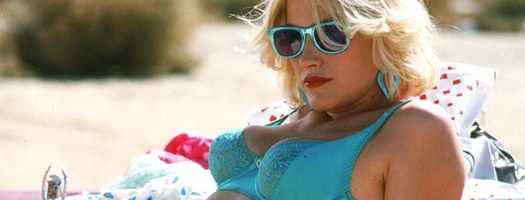
Upon watching this film for the first time, I thought Alabama’s character was annoying, pathetic and just another negative representation of women- all until I looked a little closer. Of course, I still hold this judgement for the first half of the film as the viewer is encouraged to perceive Alabama negatively as she is introduced as a call girl who is ‘pimped out’ to men by the violent and chauvinistic Drexl (Gary Oldman). Alabama is depicted as merely an object that gets distributed from man to man- an instrument with the sole purpose to gratify their sexual needs- until she spontaneously marries Clarence (Christian Slater). Now not only does Alabama belong to someone else as she has become Mrs Worley, but she then proceeds to get her husband’s name tattooed onto her body- branding herself. Alabama’s inactivity is extended further as Clarence goes to collect her belongings from Drexl and to retire her from the crime circle all whilst she stays at home watching television whimpering.
…To Active
The pivotal moment for Alabama is when she returns to the motel room to find the gangster Virgil (James Gandolfini) waiting with a gun pointed in her direction and he hints at raping her. Virgil then begins to beat her as she does not react to his interrogation regarding where Clarence and his suitcase full of drugs are, unless it is a “fuck you” response or a display of the two fingers whilst laughing in his face as she is inches away from death. The dying protagonist begins to fight back and chuckle at how ridiculous the villain looks as he is also beginning to bleed. Eventually he is defeated as she beats him over the head and shoots him repeatedly, whilst screaming chillingly and waving the gun in the air like a triumphant warrior. Alabama continues to fire aggressively at the now dead Virgil, taking out her built up frustration of being a door mat on the corpse that she has just created.
This mirrors an earlier part of the movie whereby Clarence’s father (Dennis Hopper) refuses to tell Italian gangsters where his son is despite being tortured. And because he is fully aware that he is going to die he wants to take his dignity with him by mocking the Sicilian bloodline; which I read as a final act of retaliation for how he has been ridiculed and patronised. This scene is extremely emotive and the famous operatic Flower Duet playing over the top of Clifford Worley’s speech makes it even more beautiful. This scene has been praised by many and Tarantino himself has even admitted that these ten minutes are of his proudest moments. Likewise, Alabama’s taunts toward the intimidating criminal seem to be her vengeance for how she has been treated and this is an incredible act of bravery, a trait that she lacked at the beginning.
Alabama’s courageous act ultimately saves her husband and enables them to flee towards the climax of the film. Again, Alabama saves the day as she survives the shoot-out, retrieves the suitcase packed with $200,000, aids her injured husband to their purple Cadillac and drives them to safety where they can start a family. Alabama has developed from a sex object who depends on other people for protection into a mother, a wife and somebody who can defend herself and her family. The theme of revenge is not as prominent in this film as the others that I am about to discuss, but I still think it is worthy of recognition. Alabama also clearly evolves from a passive character into an active heroine. So let me go onto the mother of all revenge-seeking heroines- with Beatrix Kiddo.
3. Beatrix Kiddo aka Black Mamba
Uma Thurman stars in Kill Bill: Vol 1 (2003) and Vol 2 (2004) as an ex member of the Deadly Viper Assassination Squad who embarks on a ‘roaring rampage of revenge’ to murder her ex-colleagues for putting her in a coma and thus losing her unborn child, after a failed attempt to exterminate her on her wedding day. Our heroine’s main target is- you guessed it-Bill (David Carradine). Not only because he is the leader of the squad and the one who put the bullet in her head, but he is also her ex-lover and the father of her allegedly deceased child. Revenge is a strong theme in this action/ thriller and the ancient proverb: “Revenge is the best dish served cold” is the first image that the audience see.
From Passive…
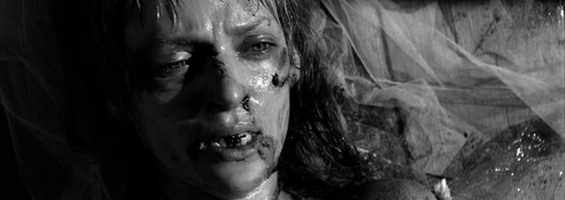
Beatrix displays the ultimate form of submissiveness during the beginning of the film as she is in a coma, and has been for four years of her life. Previous to this, we witness how she was put into this state when we watch uncomfortably as she pants for breath like a dying animal due to the savage attacks from Bill and his squad, all before Bill pulls the trigger to her head. Not only is being in a coma traumatic and one of the lowest forms of passivity but we discover that during these difficult four years men have been sneaking into her hospital room and raping her. These countless monstrous acts have been carried out with the betrayed assistance of a worker from the hospital ‘Buck’ (Michael Bowen) who seems to be the manager of this grotesque man’s club. Buck sells Beatrix’s body to each man for $75 and he even gives them permission to ejaculate inside her as “her plumbing down there don’t work no more”. He also warns them not to punch her and gives them a tub of unhygienic Vaseline. This form of degradation and ‘pimping’ out her body reminds us of the True Romance villain Drexl.
…To Active
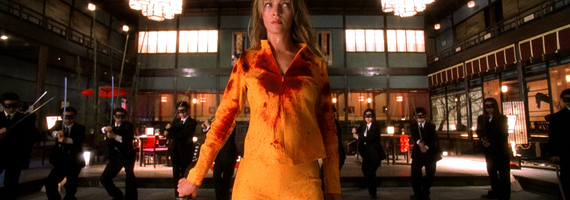
However, immediately after Beatrix wakes up from her coma she bites and kills her current rapist, slashes the Achilles heel of Buck and beats his head to death with the steel door. The dominant role has now been subverted; I mean she even drives off in Buck’s truck the ‘Pussy Wagon’. From this moment on Beatrix is on a quest to hunt down the Deadly Viper Assassination Squad and to kill them one by one admitting that she lacks “mercy, compassion and forgiveness”. Beatrix does not let anything stand in her way from being buried alive to single handedly fighting over eighty eight of O’Ren-Ishii’s men (target number one on Beatrix’s Death List Five).
The most interesting scene for me is in Vol 2 when Elle Driver (Darryl Hanah and target number four on the Death List Five) kills a fellow squad member Budd (Michael Madsen and target number three) with a black mamba snake and reads the following facts about the reptile whilst his body is being consumed by venom: “In the bush an elephant can kill you, a leopard can kill you and a black mamba can kill you. But only with the black mamba- is death sure.” I love this use of imagery as a snake may not look terrifying compared to these other large beasts but it is the most deadly and the snake’s deceitful appearance can work to its advantage by surprising enemies. Interestingly, Beatrix’s nickname from when she was a member of the squad was in fact Black Mamba, indicating that she does not look scary- what with being a Caucasian, blonde, Yankee woman- yet she is the most lethal. Beatrix lives up to her nickname when she bursts through Budd’s caravan door, much like the snake when it jumped out and bit Budd, and attacks and eventually kills Elle Driver who thought Beatrix was dead and buried.
Even as our heroine’s emotions take over at the end of Vol 2 when she is thrown into the happy families situation (surprise, surprise-her daughter is alive!), she stills completes what she set out to do- to kill Bill. The killing of Bill is an emotive scene as Beatrix’s expression and her grip onto her ex-lover’s hand demonstrates that she does not want to kill him but she needs justice to be served; she even reassures him that he “looks ready” to die. The protagonist’s method to kill Bill is significant as she uses The Five Point Palm Explosion Technique, a technique that Bill himself said to be impossible as only the great kung-Fu master Pai Mei could do it and a technique that makes her the most deadliest woman in the world. Now if that is not an active female role, I don’t know what is!
2. O-Ren Ishii aka Cotton Mouth
Another favourite female character of mine is O-Ren Ishii (Lucy Liu) who also features in Kill Bill, and has been previously mentioned in this article. Don’t get me wrong, I loathe this character for being a member of the Deadly Viper Assassination Squad and for harming the amazing Beatrix Kiddo but I just love her back story, a story which epitomises my theory of women evolving into a warrior due to the want for revenge.
From Passive…
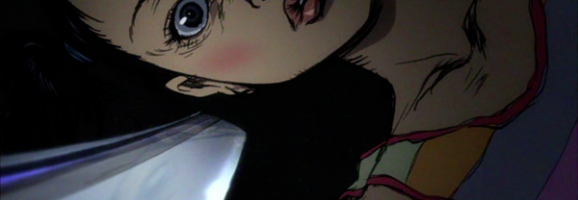
In a typical, non-linear Quentin Tarantino fashion we are shown the time period of when O-Ren is depicted as passive and the moment that her transformation begins in the form of a violent anime sequence; an idea borrowed from the 2001 Indian film Abhay (Dir. Suresh Krishna). The flashback tells us of how O-Ren had witnessed the brutal murder of her mother and father when she was just nine years old as she hid helplessly under a bed watching and hearing them both being murdered and eventually being showered by her mother’s blood. After escaping and now an orphan, she looks on at her now cremated house with her parent’s bodies inside and swears revenge from that moment on.
…To Active
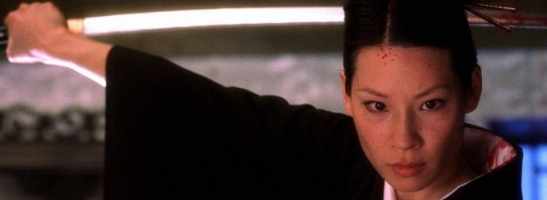
O-Ren Ishii’s riot of revenge began at the age of eleven which gave her two years to train at becoming unrelentingly lethal and this young age worked at her advantage as Matsu Motto (the man who butchered her mother and father) was a paedophile. As the young O-Ren is torturing Matsu Motto during his final moments she demands that he looks into her face and asks him to analyse her features to see if he recognises her. She wants her archenemy to know that she is the daughter of the two people he killed and that she has come after him. She wants the villain to face what he has done and for her face to be the final image he sees before he is terminated. We are then told that by the tender age of twenty she became one of the top female assassins in the world- now that’s an impressive female!
After the anime segment is over we are brought back to modern times where O-Ren is Queen of the Tokyo underworld and has a personal army called the Crazy 88 along with two assistants Gogo and Sophie (Gogo being another active and terrifying young woman). During her inauguration as leader of the crime council a fellow member Boss Tanaka blasphemies as he calls her a “half breed bitch” and reveals that she is a Japanese- Chinese-American. Boss Tanaka barely finishes his abuse before O-Ren decapitates him with her samurai sword and watches his blood shower over the council. As an act of retaliation she addresses the council speaking in English, and thus revealing her American accent, to warn them that if her heritage is ever brought up negatively again: “I will collect your fucking head.” O-Ren reasserts her status by presenting Boss Tanaka’s mutilated head to the council and she quickly becomes a terrifying figure to the room full of cowering men.
During the final scene of the movie Cotton Mouth and Black Mamba have a samurai battle which (of course) Black Mamba eventually wins. This scene is momentous because O-Ren has been undefeated since she was nine years old and only a fellow female is able to destroy her. Likewise, the untouchable Black Mamba who practically resurrected from the dead and who has just fought with over eighty eight male samurai warriors and walked away unhurt, achieved her first serious injury from Cotton Mouth. Although defeated at the end of Volume 1 O-Ren Ishii will still be remembered as the Queen of the Tokyo underworld, as opposed to her former inferior titles such as ‘orphan’ and ‘homeless’.
1. Shoshanna
And finally Shoshanna (Mélanie Laurent), my favourite female character and perhaps one of my favourite characters of all time, is the female protagonist from the war film Inglourious Basterds (2009). Shoshanna Dreyfus is a nineteen year old Jewish girl who escaped hiding under a neighbour’s floor boards in Nazi occupied France, after SS Colonel Hans Landa (Christoph Waltz) ordered his troops to take aim at the floor and kill the entire Dreyfus family. Being the only survivor Shoshanna moves to Paris, changes her name to Emmanuelle and becomes the owner of her very own cinema; trying to remain under the Nazi radar. However, a smitten German soldier Fredrick Zoller (Daniel Brühl) insists that Shoshanna’s cinema will be the host for the latest German propaganda film; attracting the biggest Nazi leaders all under one roof including Hilter and Hans Landa. Another plot running linear to Shoshanna’s story features Lieutenant Aldo Raine (Brad Pitt) and his men (The Basterds), who are planning to destroy the Nazis by scalping and torturing them to death.
From Passive…
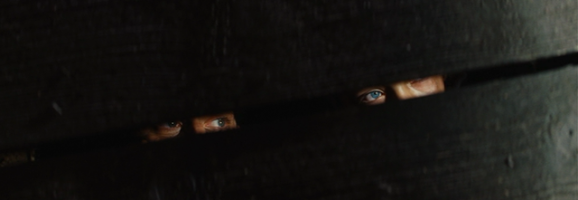
We are first introduced to Shoshanna when we see her eyes looking up from under the floorboards like a helpless rodent and Hans Landa even describes Jewish people as rodents that must be killed by him- “a hawk”. Our heroine is therefore extremely passive as she is depicted as prey being hunted by Hans Landa aka The Jew Hunter, vulnerable prey that has abandoned all dignity by hiding under someone’s floorboards. Shoshanna makes a lucky escape as the Nazi’s fire at the Dreyfus’ hideout and Hans Landa watches her run for her life covered in her family’s blood. Hans mocks Shoshanna as he bids her farewell and lets her live in fear by letting the young girl know that he knows her name when he shouts “au revoir Shoshanna!”. Four years later, Shoshanna is ordered into a Nazi vehicle whereby she unwillingly attends a meeting about hosting a Nazi propaganda film in her small cinema. Shoshanna has no choice in the matter as the Germans are overpowering her business and to make matters worse, Hans Landa is the head of security and she is forced to lunch with him.
…To Active
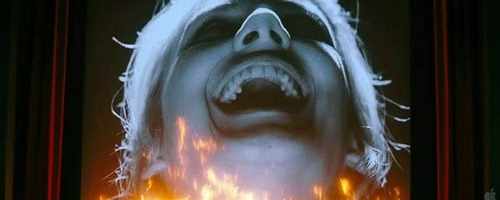
The turning point for Shoshanna happens abruptly after she has finished conducting a tour of her cinema for the German leaders. Shoshanna’s disposition becomes more confident and assertive as she tells Marcel, her employee, that she will burn down the cinema with all the guests inside and that they will make a film just for the Nazi’s to watch before they die. The protagonist not only produces her own dynamite but also threatens and forces a local man to develop her home video when she says: “You either do what the fuck we tell you, or I’ll bury this axe in your collaborating skull!” Shoshanna has quickly become active as she has been given the perfect opportunity not to just get revenge on Hans Landa, but to get justice for her deceased family and the rest of the Jewish community by exterminating Hitler himself.
During ‘Chapter 5: The Revenge of the Giant Face’ we watch as Shoshanna is preparing for the big night by applying her makeup in a warrior like fashion; she paints two tribal-like lines to her cheeks before blending it in. She then slowly pulls a black veil over her face, which I read as Shoshanna mourning for her family and her people as she is about to acquire some closure (not to mention the signification of impending death!). Although Shoshanna loses her life to Fredrick Zoler minutes before the cinema is due to burn down, she still lives on in the form of her home video and she still gets her message across. Shoshanna laughs on the video as the theatre is ablaze and she proudly admits that: “My name is Shoshanna and this is the face of Jewish vengeance.” Just like O-Ren Ishii forces Matsu Motto to look into her face before he dies, Shoshanna wants to do the same to the Nazi’s and to make them feel ridiculed and terrified before they die- just like they made her fellow Jewish people feel. Shoshanna has evolved from a victim being hunted into a predator herself and also a hero who has ended the war whilst gaining justice for her people.
So there you have it, my four favourites! Of course there are many more such as Jackie Brown (1997)- a tough cookie with a cunning plan to illegally make some money and even Kate from From Dusk Till Dawn (1996)– the only survivor of a vampire invasion and a natural with a bow and arrow. But there just aren’t enough hours in the day to cover them all! I would love to see more characters like Beatrix, Shoshanna and Jackie starring in movies. Not far-fetched, unrealistic super heroes but real women with a voice who have believable motives. I’d also love to see females who are not just there to look sexy, but are there to send bloodcurdling shivers up your spine. If you can think of anymore examples from Quentin Tarantino films then please let me know!
What do you think? Leave a comment.












Nice post. Tarantino’s skill to develop powerful women is evident in all of his movies. Jackie Brown is perhaps the most conventional of Tarantino’s films; certainly at the time and certainly with hindsight also. It adopts a straight and linear path that only become complicated when it branches off to show its several primary characters’ actions. It is Tarantino’s hidden gem.
I agree, I’m confused when people say Jackie Brown is his worst movie. It is a great story with great characters and it’s easily his most underrated film.
Jackie Brown is definitely underrated! It’s the most recent Tarantino film that I watched for the first time, an oldie but a great film
Such a good subject to discuss! All of those heroines are such good characters. I agree that Alabama did seem pathetic and boring at the beginning but once things kick in and she ends up taking control of the situation she became one of the best female Tarantino characters ever! And it goes without saying that Beatrix is kickass!
Enjoyed reading your article. Tarantino’s one of the best – I think Jackie Brown may be my favorite of his heroines. Fantastic. Great article!
Jackie Brown need its own entry into this list. Underrated character AND movie.
Nice article, I think Tarintino takes some inspiration from the black heroines of the 1970s blaxploitations films, he’s certainly a big Pam Grier fan.
Thanks for the feedback :)! This is my first article with The Artifice and my first article in general! So great to hear what you guys think.
Great Article! I always enjoyed Tarintino’s method of featuring women in bad asses. I really enjoyed the attention to back story he displays, especially in Kill Bill.
Great article. This is why Quentin is great. We can see powerful women, but we also see them rise from weakness. Great read.
This is a fine piece of writing–great job! I think Tarantino, for all his faults, at least gives actresses interesting, complicated roles to play. I know he is criticized a lot for his violence, but in nearly all of his films, violence is an act of empowerment and he is brave to show how this can sometimes be the case.
Great job sis! I wouldn’t have included jackie brown as he didn’t create the character, although it is a Tarantino film and he chose to adapt it, I like that you have stuck to the women he invented. (Even though they too are a pastiche of other characters)
Following your advice I skipped the ones I hadn’t watched which took me straight to number one (I’m not sure how I still haven’t got around to watching Kill Bill. I feel like a poor Tarantino fan and need to change that very soon). Inglourious Basterds was fantastic for so many reasons, but Laurent’s interactions with Christoph Waltz were a personal highlight, especially the strudel eating scene.
You really need to watch Kill Bill soon! I have only recently watched it too as I have neglected it for so long as it didn’t seem my cup of tea… I have now watched it four times in like a month! True Romance is a hidden gem too with a great soundtrack (what Tarantino film doesn’t have great music?!)
True Romance remains my favorite Tarantino movie (even if he only wrote it). I’m actually glad he didn’t get to direct it, because I like Tony Scott’s ending better. But great article, I can’t think of many other directors who give such interesting roles to women. I would say Lars Von Trier, but that guy is just a whole other story.
I agree, True Romance is one of my favourites, brilliant. Especially for one of his first ever movies! I think it is one of those films that you need to watch a few times to appreciate, great cast too!
I think Jackie Brown was definitely my favorite Tarantino woman taking control of her own destiny.
Great post! Really enjoyed reading this and as someone who is vaguely familiar with Tarantino – I have only seen three of his films, I am now compelled to watch more of his films and subsequently observe his championing of the female.
You really should! As a female I find it inspiring to watch active women that you can actually see grow on the big screen. Really nice contrast to the passive women that that we are constantly fed with.
I loved this article! Strong female characters are so sparse and oftentimes one-dimensional and Tarantino is among few who can create such authentic and empowering women. I commend your attention to detail and your knowledge on Quentin and his work is admirable. I agree with your decision to include Alabama in the list as True Romance, while directed by Tony Scott, is a Tarantino script.
Shoshanna certainly fits the best here as far as the direction your article, but I feel like her transformation into an active female character occurred some time before she verbally disclosed her plan to her ‘lover’ and the audience. As soon as she is reintroduced into the film she is shown to be independent by her attitude towards Zoller and the fact that she was in a interracial relationship, which was not nearly as common or accepted in those days. As well as owning her own cinema, these attributes showed she was not a passive woman or one that would be swayed by popular opinion simply because of its convenience.
The only other thing I would have added was that Beatrix Kiddo was fleeing her life of violence when she was ambushed, which she later admits she knew would not work. This adds to the passive nature of her character before her evolution into a more active character. All in all, outstanding article.
Nicely done! I particularly like what you said about O-Ren being killed by a woman, and I like even more so your parallel between O-Ren and Shoshanna.
I appreciate Tarentino’s films but I wish he would mix it up every now and then. This article reinforces my feelings on this matter.
I love Inglourious Basterds, and Shoshanna was definitely one of my favorite aspects. Overall, I like a lot of Tarantino women, such as Kate in From Dusk Till Dawn. Excellent article!
Great post! Thanks for sharing!